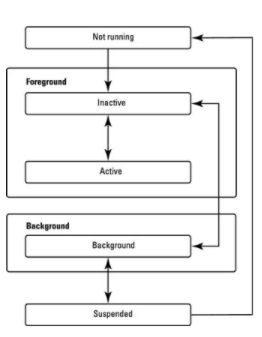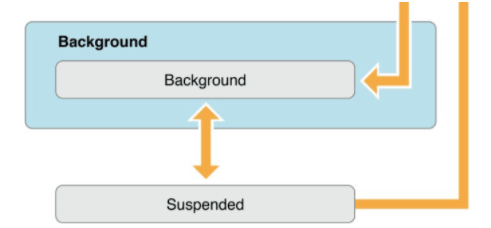5 States of an iOS App Lifecycle
 Source The current state of an app determines what it can and cannot do at any time. This article will dive deeper into the five states of an iOS app lifecycle and the importance of having a capable development team that knows its in’s and out’s.
Source The current state of an app determines what it can and cannot do at any time. This article will dive deeper into the five states of an iOS app lifecycle and the importance of having a capable development team that knows its in’s and out’s.
Need help selecting a company?
Based on your budget, timeline, and specifications we can help you build a shortlist of companies that perfectly matches your project needs. Get started by submitting your project details.
Stages of an iOS App Lifecycle
- Not running
- Inactive
- Active
- Background
- Suspended
1. Not Running
The first state of an iOS app lifecycle is the “not running” stage. Within this state, the app has either not yet launched or has been terminated by the system or user. For example, if a user has closed out of their social media app, it would be in this stage. If a user were also to delete their social media app for a cleanse, that app would be considered part of the “not running” state. By launching the app, users can quickly get out of this stage and move to the foreground with the next state.
2. Inactive
When an app starts, it transitions through a short state while the app’s information loads. The inactive state is where the app is actually running, but it is performing other functions that make it not ready to accept any user inputs or events. For example, if a user is hard at work playing their mobile app game and a call comes through, the game enters this state. This state is also where the app enters the “foreground.”  Source In the foreground, the app has the user’s attention, making it a priority over other apps or functionalities within the system. When the app is “fully launched,” it will enter its main phase for active users.
Source In the foreground, the app has the user’s attention, making it a priority over other apps or functionalities within the system. When the app is “fully launched,” it will enter its main phase for active users.
3. Active
The active state is where all of the magic happens. Users are playing games, buying clothes, making purchases with their mobile wallets, and more. The app is still in the foreground, capturing all of the users’ attention. In this phase, it can complete any buyer journeys or other events relevant to the mobile app. Once the swiping ends and user attention is lost, the app enters a new mode.
4. Background
Before being fully suspended, the app enters the background state.  Source In this background state, the app is allowed to continue executing code. For example, fitness tracking or food delivery apps can move to this phase when progress is still being monitored. This can also occur when a user switches to a different app as the current app moves to the background. The background stage can be useful for saving any application data or releasing any resources that aren’t needed. In this phase, developers need to be aware that the system can be terminated or suspended at any time.
Source In this background state, the app is allowed to continue executing code. For example, fitness tracking or food delivery apps can move to this phase when progress is still being monitored. This can also occur when a user switches to a different app as the current app moves to the background. The background stage can be useful for saving any application data or releasing any resources that aren’t needed. In this phase, developers need to be aware that the system can be terminated or suspended at any time.
5. Suspended
The suspended state is when the application is unable to execute any code and could terminate if the system doesn’t have enough memory storage. It occurs a little while after the app is in the background state. If no event is occurring at all, the app will go into this phase. It can take about five seconds for this change to happen. The system can also move the app to this state without any notification. This helps to make free space for a current foreground application. To manage your mobile app’s lifecycle, it is important for developers to remain involved in all states and stages.
Development Teams Should Understand the iOS App Lifecycle
Who knew so much happens by simply opening an app on your mobile device. iOS is one of the most intuitive and user-friendly operating systems for app development. Knowing the lifecycle of a mobile application is key to managing any type of app successfully. To be prepared for any bumps in the road, a capable developer and their team should know the basics of an iOS app lifecycle. Every iOS developer should have an in-depth understanding of an iOS app lifecycle as their experience grows. A skilled developer will be able to use the power of a lifecycle to their advantage.
Need help selecting a company?
Based on your budget, timeline, and specifications we can help you build a shortlist of companies that perfectly matches your project needs. Get started by submitting your project details.